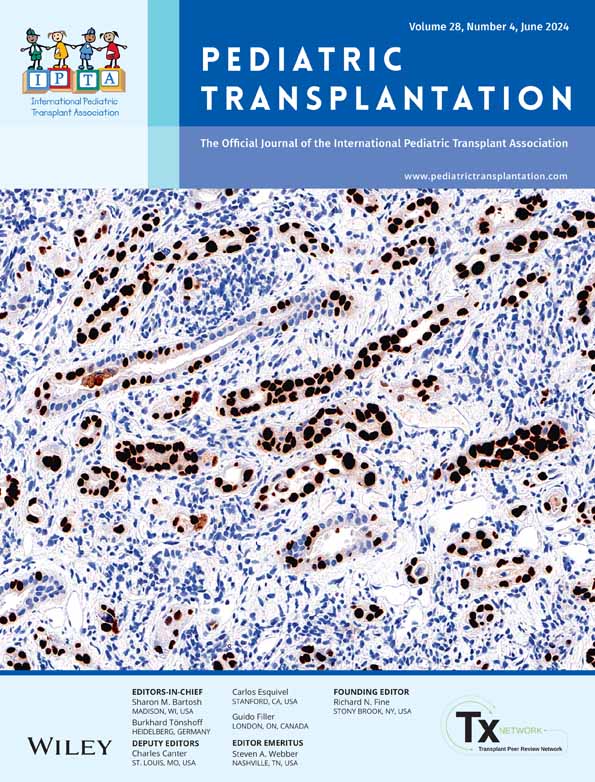Optimizing pediatric liver transplantation: Evaluating the impact of donor age and graft type on patient survival outcome
Yong K. Kwon and Pamela L. Valentino contributed equally.
Abstract
Background
We examined the combined effects of donor age and graft type on pediatric liver transplantation outcomes with an aim to offer insights into the strategic utilization of these donor and graft options.
Methods
A retrospective analysis was conducted using a national database on 0–2-year-old (N = 2714) and 3–17-year-old (N = 2263) pediatric recipients. These recipients were categorized based on donor age (≥40 vs <40 years) and graft type. Survival outcomes were analyzed using the Kaplan–Meier and Cox proportional hazards models, followed by an intention-to-treat (ITT) analysis to examine overall patient survival.
Results
Living and younger donors generally resulted in better outcomes compared to deceased and older donors, respectively. This difference was more significant among younger recipients (0–2 years compared to 3–17 years). Despite this finding, ITT survival analysis showed that donor age and graft type did not impact survival with the exception of 0–2-year-old recipients who had an improved survival with a younger living donor graft.
Conclusions
Timely transplantation has the largest impact on survival in pediatric recipients. Improving waitlist mortality requires uniform surgical expertise at many transplant centers to provide technical variant graft (TVG) options and shed the conservative mindset of seeking only the “best” graft for pediatric recipients.
CONFLICT OF INTEREST STATEMENT
The authors of this manuscript have no conflicts of interest to disclose.
Open Research
DATA AVAILABILITY STATEMENT
The data that support the findings of this study are available from the corresponding author upon reasonable request.




